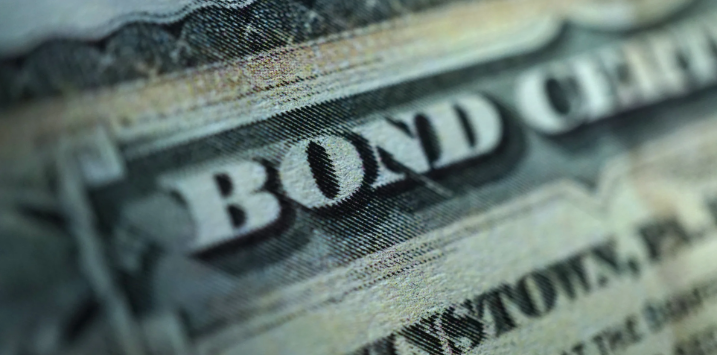
Bond market on alert: rising yields, weak demand and looming debt flood
Recently, I recorded a video discussing the U.S. bond market flashing red. That video, to our great surprise, went a little viral. We noted surging rates on 10 and 30-year bonds amid a “lacklustre auction of 20-year bonds, where demand was soft – a red flag in itself…And behind this, a bigger storm [is] brewing: investors are losing appetite for U.S. Treasuries just as Washington prepares to unleash another flood of debt…U.S. President Trump’s proposed tax bill, if passed, could balloon the deficit by trillions over the next decade. Moody’s is already reacting – downgrading America’s credit rating, citing the “increasing burden of financing the deficit.”
I added, “Perhaps more worryingly, as demand for U.S. bonds softens, the U.S. Treasury may no longer be a price-setter in the bond market. It may become a price-taker.”
The United States stands at a precarious economic crossroads, with its national debt approaching US$37 trillion and the new tax bill poised to deepen an already ballooning deficit. Irrespective of what trump supporters say, this legislation threatens to flood markets with Treasury bonds at a time when global investors are growing wary. Compounding this, global liquidity, which edged higher to US$176.6 trillion last week according to measures by CrossBorder Capital taken from major central banks’ balance sheets and collateral values, shows signs of slowing growth. The convergence of soaring U.S. debt, rising bond yields, and a global liquidity slowdown potentially signals a gathering storm with consequences for economic stability.
The U.S. debt horizon is growing dim and the potential for a storm is intensifying, with interest payments consuming 4.6 per cent of Gross Domestic Product (GDP), the highest among developed nations. Moody’s recent downgrade of the U.S. credit rating from AAA to AA1 reflects mounting investor unease, while 30-year Treasury bond yields have climbed to their highest levels since 2007. These elevated yields, driven by perceptions of fiscal recklessness, eventually ripple through the economy, raising borrowing costs for mortgages and corporate loans.
Simultaneously, global liquidity growth has decelerated, with the Federal Reserve’s quantitative tightening (QT), alongside similar policies from the European Central Bank and Bank of England, restricting the flow of money. Only the People’s Bank of China has bucked this trend, easing through liquidity injections. The slowdown in liquidity, now growing at a 3.8 per cent year-on-year (YoY) rate compared to 5.5 per cent in early May, threatens risk and liquidity-sensitive assets, particularly as the debt refinancing cycle ramps up in 2026.
Bond markets are a key driver of this precarious situation. Investors, wary of the U.S.’s mounting debt, demand higher yields to compensate for risk, pushing rates to levels that threaten economic growth. The Federal Reserve’s policy of selling Treasuries under QT has further propelled yields upward. Some suggest what is occurring is reminiscent of the inflationary crises of the 1970s. I think that’s an exaggeration.
Fortunately, the collateral multiplier, which is sensitive to bond market volatility, has stabilised. However, according to CrossBorder, the Shadow Monetary Base, comprising central bank liquidity and bond collateral, has slowed its growth to a 10.7 per cent annualised rate from a recent high of 26 per cent. A weaker U.S. dollar has provided some relief by boosting non-U.S. collateral values, but this is insufficient to offset the broader tightening trend.
The Federal Reserve faces a conundrum, constrained by its dual mandate of stable prices and maximum employment. With inflation above the 2 per cent target and unemployment at 4.2 per cent within the Federal Reserve’s full employment range, quantitative easing (QE) – used effectively in 2008 and 2020 to suppress yields by purchasing Treasuries – is not currently justified. Yet, without QE, rising yields could devastate the U.S. economy, burdening homeowners with unaffordable mortgages and stifling business investment.
The 1970s offer a stark warning: rising rates triggered recessions and spiking unemployment. A similar scenario today could push unemployment above 5 per cent, forcing a belated Federal Reserve response that may come too late to prevent widespread economic damage. Globally, the ripple effects could disrupt trade and destabilise financial markets.
Meanwhile, the risks of restarting QE are significant. Printing money to cap yields could reignite inflation, erode investor trust, and distort markets, as seen in the post-2020 inflation surge. Yet, the Federal Reserve’s current hesitation leaves the economy vulnerable. A sharp unemployment spike or market crash might force action, but the damage – job losses, corporate failures, and shattered consumer confidence – could be unavoidable. The global liquidity cycle, now expected to peak in early 2026 rather than Q4 2025 due to downside risks to near-term growth, suggest central banks to act decisively.
Bottom line; the U.S. must curb deficit spending and reconsider the fiscal recklessness of the new tax bill, which risks overwhelming markets with debt. The Federal Reserve could explore limited QE to stabilise yields without flooding markets, balancing its mandates with proactive measures. Globally, central banks must coordinate to prevent a liquidity shortfall, particularly as debt refinancing pressures mount. The U.S. debt crisis and global liquidity slowdown are intertwined challenges, hurtling the global economy toward a potential ‘moment’. Policymakers need to act with urgency to rein in deficits, restore confidence, and navigate any abyss before the consequences become unavoidable.
You can view the part one: Bonds are flashing red and part two: Bonds are still flashing red videos here.